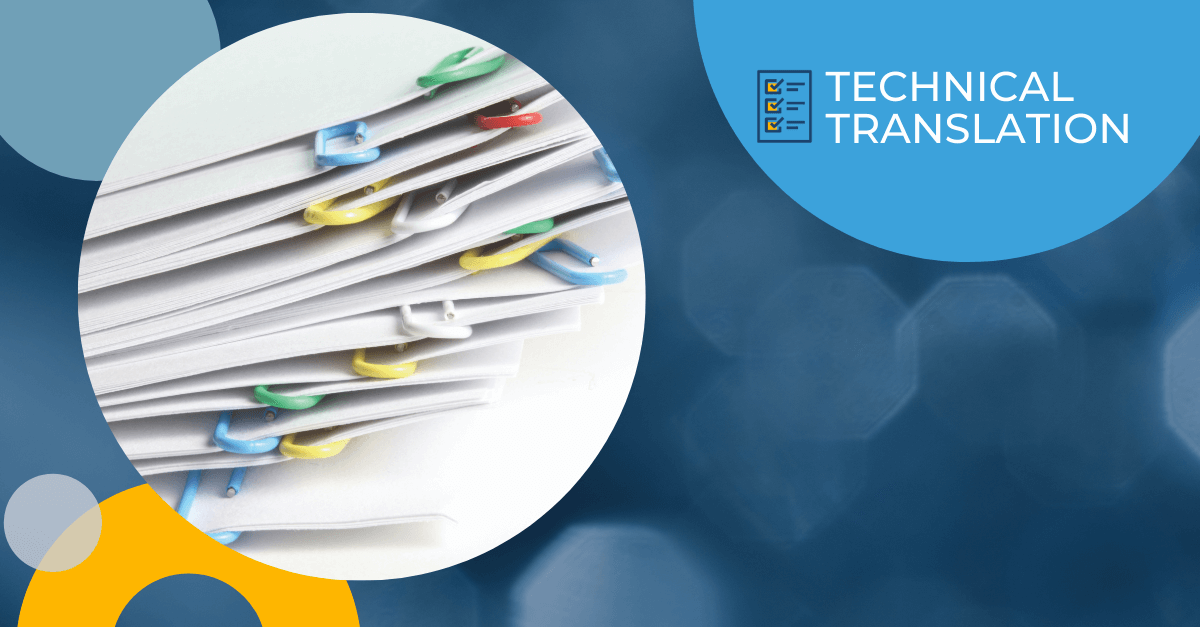Tag: document translation
5 Tips to Lower Translation Costs in 2015

The holidays are always stressful, but many companies are still figuring out next year’s budget and re-examining ways to lower costs in 2015. In our “news you can use” section, here are 5 tips for lowering your translation costs in 2015:
1. Translate only into those languages that are widely used
You can reach 84% of global Internet users by translating your English website into just 9 languages. (You can reach 71% by translating into only five languages.) The numbers are similar for software and mobile apps. If you are targeting a global audience and don’t have a particular region in your sights, a great way to lower translation costs is to focus on the most widely used languages and skip the rest.
2. Request conversions
Many document translation projects involve translating content into languages that are very similar. For example, Canadian French and European French, or Latin American Spanish and European Spanish. The main differences between the languages listed above relate to word choice, spelling, and punctuation. To save money, you don’t need to translate the document into both languages-instead ask your translation partner to edit or “convert” the translation into the other language. Editing/revising an existing translation is far less expensive than ordering a new one.
3. Reduce word count of the source document
If possible, review your source files to see if any content can be edited out or doesn’t require translation. Most translation companies charge by the word, so eliminating unnecessary words can make a big difference. Even if the content was critical in the original version, it might not be relevant to a foreign-language audience. For example, not every word of marketing content requires translation.
4. Finalize text before requesting translation
Unless it’s absolutely necessary, make sure that content is completed and approved before submitting it for translation. Changing copy in the middle of a translation project not only adds time but can also increase cost, especially if the previous version has already been translated and now needs to be re-translated. If you do need to make changes after initiating a project, send them to your translation partner as quickly as possible.
5. Allow sufficient turnaround time
Sometimes last-minute translations can’t be avoided, but whenever possible give your translation company enough time to complete your translation project at standard turnaround. Rush turnaround usually means rush fees, and the shorter the turnaround, the higher the rush surcharge.
Get the latest insights delivered to your inbox
How to Lower Your Document Translation Costs

Document translation services are a regular need for companies doing business overseas, employing foreign language staff, or looking to target foreign markets. Machine translations and discount vendors rarely get the job done and it is very important to make sure that you invest the proper resources for professional translation services. With that said, there are steps you can take to cut costs significantly for document translation without sacrificing on quality.
1. Request Repetitive text discounts
Repetitive text discounts can help save your company a significant amount of money. For many document translation projects, there are sections or paragraphs that contain repeated content. Instead of having to translate the content multiple times, you can cut costs by speaking with your translation company about discounts for repetitive text where applicable. Many translation services provide discounts when translating two or more documents with significant sections of identical content, or if there are frequent repetitions within a single document. For website translation, there is often a significant amount of repetitive text and requesting discounts is a smart move.
2. Use Translation Memory
Translation Memory is a linguistic database that makes previous document translations more accessible for future work, and automates various translation-related tasks. It accumulates and stores all previous translations and “learns” from the translator so the same phrase or sentence won’t have to be translated twice.
For example, a company might need to add additional instructions or a new product to their manual or update their brochure. Instead of having to translate the entire document again, the translation memory tool would have already stored key terms from the previously translated brochure/manual content.
This can help lower costs and also ensure consistency in terminology and style across all product manuals and brochures.
3. Request conversions
Many document translation projects involve translating content into languages that are very similar. For example, Canadian French and European French, or Latin American Spanish and European Spanish. The main differences between the languages listed above relates to slang, spelling, and punctuation. In situations like these, a company would not necessarily have to translate an entire document into both languages–instead they could edit or “convert” the translation into the other language. By asking your translation company to provide a single document translation and then to convert that translation, you can help reduce translation costs.
You never want to sacrifice quality, but the above steps can allow you to get the best of both worlds – document translation services from a top-tier company at a reduced cost that will make you or your client happy. When using translation services, make sure to demand the following reductions to receive the most competitive price possible.
Get the latest insights delivered to your inbox
5 Steps to Ensure a Successful Translation

When you’re planning an entry into a new market, translating your documents may seem like the least of your concerns. Yet, a poorly translated project can harm your company’s perceived professionalism, negatively impact the message they are trying to get across and handicap an otherwise brilliant new market strategy.
Here are 5 steps you can take to ensure your translation process runs smoothly.
1. Provide Enough Time
Time is everything, and whether you are tackling document translation, patent translation, medical translation, or website localization, it is important to give yourself enough time to perfect it. You want to make sure that the translator or translation company has enough time to thoroughly research the subject matter, prepare the translation, and revise and proofread until the final draft is perfect.
The Project Manager at Morningside, says that “Collaboration is key, the more time you have with your translator the more likely you’ll be on the same page. Effective teamwork and communication is one of the keys to localization and translation success.”
Tip: If you know that you will need a translation done and you want to reach out to a professional translation company, speak with them as early as possible so that they can build a custom workflow for your project and find the ideal translator for your project.
2. Create a translation glossary and style guide.
A translation glossary and style guide are helpful cheat sheets for linguists to better understand your company. A translation glossary includes the companies “lingo”, words that should stay consistent throughout, and words that should not be translated such as product names. A style guide describes how a company should be presented visually and textually and the overall style and tone of the company. In short, it identifies those branding elements that must remain, no matter the locale. Providing both a translation glossary and style guide to linguists can help ensure consistency. Without this, words and phrases can be translated in multiple ways across different languages meaning more time spent revising translations to create consistency. A Glossary and style guide can not only help with consistency, but it can also reduce the length of time it takes to complete each document translation and cut costs.
3. Don’t use Multiple Linguists
You might think that using many linguists for large projects will speed up the process, but it could have a negative impact on the overall quality and cohesion of the project. Why is that? The more linguists involved, the more prone you’ll be to inconsistencies in the translation. Beyond the specific style and tone of each linguist, many words have multiple translations that could fit in a given language and consistency is key when delivering a message and building a brand. This is especially true if you want to keep with a specific and notable brand image or content style used in the past. The same also applies to your proofreader – give one person enough time as opposed to forcing the issue with multiple people.
The caveat to this idea is getting a fresh set of eyes on a longer project. Once you’ve completed a translation, give one person with fresh eyes the chance to look it over and check for mistakes.
4. Provide as much detail as possible.
The more information you can provide to your translator or translation company, the better. Besides including more details in the translation, it gives the translation service a more accurate ability to choose a translator that has the expertise in that specific field.
5. Translation memory tools.
Translation memory tools are able to store segments, such as sentences, titles, headings, and phrases and create a database for future projects. This helps save time and money for any updates that need to be done to a project, or for translating any new content. It enforces consistency throughout all versions of any projects and also cuts time because the linguists don’t have to spend time re-translating the same thing time and time again. Morningside Translations currently works with both MemoQ and SDL Trados Studio which has helped reduce client costs tremendously.
A high-quality translation is a key part of bringing your product or service to a new market, and a poorly executed translation can cost you business. By following the above tips, you can improve the quality of your translation, lower costs and help make your entry into new markets an easier process.
Get the latest insights delivered to your inbox
Litigation Translation

In our increasingly international business environment, cross-border litigation is becoming far more common, and that means the need for litigation translation is greater than ever before. The recent sparring between Samsung and Apple is a reminder that high-stakes matters often involve companies based in different countries, speaking different languages. Litigation translation services including document translation, document sifting/review, and interpretation can assist clients during discovery and may prove essential in winning your case.
During the discovery phase of an international lawsuit, hundreds, if not thousands, of foreign-language documents are gathered that may be relevant to your case. The cost for translating every document may prove prohibitive. One litigation translation service that might prove helpful is document sifting, where an expert translator sifts through these documents on-site or online, filtering and prioritizing the documents based on the criteria you provide. The translators can also quickly summarize key documents. Document sifting can help you save both time and money by ensuring that only those documents that you really need are translated.
It’s important to keep in mind that if documents translated for litigation will need to be submitted in court, it is necessary to obtain a certified translation, and to check to see if the court has any special requirements regarding the certification. In the U.S., a standard certification will usually suffice. But for courts overseas, a notarized or apostille certification may be required.
Get the latest insights delivered to your inbox
Legal Translation Costs: Who Should Pay? (Part 2)

By Shanna Bergman
We previously explored the issue of who should pay for legal translation services in November of 2011, when the United States Court of Appeals for the Ninth Circuit held in Taniguchi v. Kan Pacific Saipan LTD. 633 F.3d 1218 (9th Cir. 2011) that the district court did not abuse its discretion in awarding legal translation costs to Kan Pacific, including document translation costs (from Japanese to English) as well as interpretation costs. The Court of Appeals interpreted 28 U.S.C. §1920(6) (which grants courts discretion to award costs for the compensation of interpreters) to include document translation as part of the costs to be awarded at the conclusion of litigation. The Court of Appeals stressed in their opinion that Rule 54 of the Federal Rules of Civil Procedure includes “decided preference for the award of costs to the prevailing party and thus, the prevailing party should be awarded costs for services required to interpret either live speech or written documents into a familiar language so long as interpretation of the items is necessary to the litigation”. Taniguchi appealed and the Supreme Court of the United States granted certiorari to hear the case, which could have a big impact on who pays for legal translations.
The case was argued before the Court on February 21, 2012 and the decision came down on May 21, 2012. The decision was highly anticipated in the litigation world as, amongst other things, a decision that “interpretation” is the same thing as written legal translation in the context of reimbursement for these expenses, could potentially shift the entire “cost-benefit” analysis for commencing litigation in the first place.
The Supreme Court has now held that “because the ordinary meaning of interpreter is someone who translates orally from one language to another, the category ‘compensation of interpreters’ in §1920(6) does not include the cost of document translation”. Taniguchi v. Kan Pacific Saipan LTD, 566 U.S.____(2012) In its opinion, the Court stated that “when a term is not defined in a statute (as is the case here) we give the term its ordinary meaning” Id. The Court turned to several authorities to determine the ordinary meaning of “interpreter”. They cite the following: American Heritage Dictionary defined the term as one who translates orally from one language to another; Scribner-Bantam English Dictionary defined the word “interpret” as to “translate orally”; Random House Dictionary defined “interpret” as to translate what is said in a foreign language; Oxford Dictionary defined interpreter as one who translates languages (breaking it down into two sections)…one who’s office it is to translate the words of persons speaking different languages, esp. orally in their presence; Black’s Law Dictionary defines “interpreter” as a person sworn at trial to interpret the evidence of a foreigner to the court and “interpret” as to translate orally from one tongue to another. Id. In addition, the Court noted that the statutory context of the Court Interpreters Act (noting that Congress enacted §1920 as part of the Court Interpreters Act) is a program to facilitate the use of qualified interpreters in judicial proceedings before the courts of the United States in any action, civil or criminal, where a witness or party speaks only or primarily a language other than the English language. The opinion goes on to state that the statute also gives very precise instructions for interpretation (i.e. simultaneous interpretation, consecutive mode etc.). The Court stated that given these specificities, there is strong evidence that “Congress was dealing only with oral translation in the Court Interpreters Act” and nothing to do with the legal translation of documents.
With respect to Rule 54, the Court notes that “the discretion granted by Rule 54(d) is not a power to evade the specific categories of costs set forth by Congress…thus provides no sound basis for casting aside the ordinary meaning of the various items enumerated in the costs statute, including the ordinary meaning of ‘interpreter’” Id.
As an interesting final note, and one to perhaps consider as we move forward, Justice Ruth Bader Ginsberg notes in her dissent that “Some translation tasks do not fall neatly into one category or another” (i.e. legal document translation or interpreter). She states that sometimes an interpreter “may be called upon to sight translate a written document” (i.e. convey the substance of a written document orally). Id.
So essentially, the Supreme Court has decided to maintain the status quo of reimbursement for interpretation services but not for document translation services related to litigation. Those entering into commercial or patent litigation which may require extensive legal translation of foreign-language documents need not fear paying a hefty translation bill should they lose their case, though it is still a good idea to factor in the legal translation costs they will assume, which are often far higher than originally anticipated.
Get the latest insights delivered to your inbox
How To Select a Legal Document Translation Provider

(This blog is a truncated version of an article that ran in the New York Law Journal last month.)
At most law firms, when a legal document translation provider is needed, the usual course of action is to request estimates from several translation companies and pick the cheapest one.
This is not unreasonable. Clients are more cost-conscious than ever and less likely to obtain a legal translation that comes with a hefty price tag. Unfortunately, the cost of fixing a poor translation is much higher than obtaining an accurate translation, to begin with, not to mention spillover costs in embarrassment or even potential damage to your case.
Here are 7 factors to consider when selecting a legal translation provider:
1. Quality
Quality is the most important factor. But how can you determine if a company provides quality legal document translations? The translation is not a science, and there is no such thing as a perfectly legal document translation. But it makes sense to find out more about a company’s quality control procedures, how they select and vet their translators, and how they proofread completed translations. You may want to ask a legal translation provider if their translators are accredited by the American Translator’s Association (ATA) or similar organizations? What is their process for dealing with translation errors? If a translation company can’t answer these questions to your satisfaction, you should be wary of trusting them with your documents.
2. ISO Certification
While ISO certification does not guarantee accurate legal translations, it does indicate that the translation company has a quality management system in place and documented processes for quality assurance. While not foolproof, it is certainly better than no certification. Since many established translation companies have achieved ISO certification, you are better off relying on one that does.
3. Legal Specialization
It makes sense to choose a company that specializes in legal document translation. Even if you only need to translate several documents, you are better off working with a provider that is familiar with litigation and the discovery process and can provide legal support services in addition to document translation (i.e., interpretation for depositions, foreign-language document review, etc.). Ask about the qualifications of their legal translators, and how many years they have been translating legal documents. Also, ask about proofreading. If your case deals with the technical subject matter, then make sure the translators they would assign have a relevant educational and experiential background.
4. Reputation
How long has the agency been around? Has anyone in your firm used them in the past? You should not hesitate to ask for references to projects of similar scope and subject matter.
5. Responsiveness
It’s worth inquiring how long estimates typically take. Most translation companies can provide an estimate in an hour or two. But some—particularly the largest companies—can take much longer. Do they provide after-hours or weekend service? If translation requests often arrive at your desk after 6 pm, you should not select a translation provider that only responds to new requests between 9-5.
6. Size
Bigger does not necessarily mean better. At the largest companies, chances are you will deal with a different project manager and translator for each project, and the quality of the translation work may vary from project to project. You may wait longer to obtain a quote, receive impersonal service, and get the impression that your business is low on the priority list if you are not a big client. On the other hand, it makes sense to work with a company that is big enough to handle the various languages and technical specialties you may require at the necessary turnaround time. As in so many things, the “Goldilocks Rule” applies: pick a translation company that isn’t too small or too big, but “just right” for your needs.
7. Price
Price is always a concern, and clients are more sensitive than ever in this economy. While quality—not price—ideally should be the overriding factor, once you have established that the translation companies you are considering have appropriate qualifications, it certainly makes sense to compare fees. Just make sure you compare apples to apples. Many translation companies offer low rates that only include the cost of the translation– proofreading and formatting are extra. Their per-word rates may be lower than other services, but the final bill ends up much higher. Make sure to ask what the translation estimate includes, and if it is “all-inclusive.” If it isn’t, then ask for an estimate of the additional charges.
Get the latest insights delivered to your inbox
Legal Translation: Who Should Pay?

The costs of legal translation incurred during litigation can be enormous. Document translation fees for a complex, cross-border litigation case can easily reach hundreds of thousands of dollars, if not more. Who should pay for translation services, and should the winner be reimbursed for the huge expense?
The Supreme Court will weigh in on this issue during its 2011-2012 term, which began last month. On the court’s docket is Taniguchi v. Kan Pacific Saipan, LTD, 633 F.3d 1218 (9th Cir. 2011) a case which will impact to what extent courts can award the winning party money spent for legal translation services during the course of litigation.
The case began when professional Japanese baseball player Kouichi Taniguchi fell through a wooden deck on Kan Pacific property and tore several ligaments. The injuries prevented him from playing, and he was forced to breach his contract. He sued Kan Pacific for negligence in order to cover lost wages, but ultimately lost the case. In addition, he was ordered to pay $5517.20 in legal translation costs to Kan Pacific for documents translated from Japanese to English. Taniguchi appealed.
In deciding Taniguchi, The 6th circuit had relied on U.S. Code § 1920. Title 28,1920 states that a court may reimburse the winning party for certain expenses like filing and printing transcripts, and also for certain interpretation services. The court relied on a dictionary definition of “interpret” which included “to translate into intelligible language.” Based on this, the court determined that “translation” and “interpretation” are interchangeable and that translation services should also be covered. Now as most translation companies will tell you, “interpretation” and “translation” are not synonymous. Translation involves written text; interpretation is oral and involves a speech or phone conversation. On appeal, The 7th circuit argued that this expansive definition of “interpreter” went too far, and split on allowing litigation costs like document translation to be included on the list of recoverable costs.
It was up to the 9th circuit to decide, and it ultimately agreed with the 6th circuit that courts could award the winning party the costs of legal document translation. Now it is up to the Supreme Court to make the final decision which could have far-reaching implications. The same reasoning that led the 9th circuit to decide in favor of reimbursing translation costs could impact e-discovery and a range of other litigation expenses. The cost-benefit analysis of entering into litigation could shift considerably given the potential reimbursement demands. Parties might agree to limit the amount of discovery and translation they do to hedge against paying the full costs later on, and the discovery process could become much more limited for certain cases. We’ll have more to say when this case is decided.
Get the latest insights delivered to your inbox
Document Translation Dispute Irks Judge

Disputes involving document translation are not unusual during patent litigation. What is unusual is for the presiding judge to single out these translation disputes in his decision. But in Gemstar- Tvguide International Inc & Others v Virgin Media Ltd & Another [2011] EWCA Civ 302, Lord Justice Robin Jacob did exactly that.
The case hinged on whether several Gemstar patents lacked novelty because a Toshiba patent published a month earlier disclosed the same idea clearly and unmistakeably. Since the Toshiba patent was in Japanese, the translation of the document became a key issue. Lord Justice Jacob notes:
“…I must say a word about the disputes over translation. For there have been several translations. A lot of expense and time was wasted because of this…In principle, whenever a party relies on a document in a foreign language, the translation should be sorted out at an early stage. Ideally the party relying on the translation should send it to the other(s) with an express request for agreement within a reasonable time…If the translation is agreed, well and good. But if not, the Court at the case management stage should normally insist upon agreement or early resolution of the translation dispute, if necessary by a hearing for that purpose.”
Lord Justice Jacob goes on to say that in the end the translation issue was only settled at the trial. The bottom line is that document translation should be carried out at an early stage, so that any disagreements can be worked out during the case management conference, if not before. For critical foreign language documents, it also makes sense for each side to exercise due diligence by having the translation independently reviewed and/or performing a backwards translation and asking the translator to explain any discrepancies. If your translations aren’t in order before the trial begins, you risk provoking the judge’s ire.
Get the latest insights delivered to your inbox
English – A Polyglot Language

As a professional translation company, we spend much of our time focused on foreign languages, especially languages that come up frequently for legal translations and patent translations. But every so often we turn our attention to our native English. We are constantly surprised by how diverse the English language is, and how much of the English vocabulary is derived from foreign words. According to one survey, only one-third of English words come from Old English. 41% come from French and Old Norman, and at least 15% comes from Latin. Another 10% come from a mix of other languages.
There are plenty of English words whose foreign origin is quite obvious. We can guess where chauffeur, angst, and desperado come from (French, German, and Spanish). But many words that sound like “classic” English also have a foreign origin, and the origin is not necessarily European or even Indo-European–you have probably used a few words today that come from languages that many of us have never heard of. Here are a few examples:
- Ketchup – The word comes from Amoy, a Chinese dialect, where it meant the brine of pickled fish.
- Barbecue – The quintessential American cooking tradition, BBQ actually comes from Carib, a language spoken in northern South America and the Caribbean.
- Sugar & Candy – These sweet words come from Sanskrit, the ancient Hindu language of Northern India.
- Husband – The word comes from Old Norse, the extinct language of the Vikings, where it meant “master of the house.” In modern American usage, it often means the exact opposite.
- Pal – The word comes from Romany, the Gypsy language, where it means brother or comrade.
- Tank – As in water tank. The word comes from Gujarati, a language spoken in India.
Get the latest insights delivered to your inbox
Reviewing a Translation

When choosing a translation service, it is important to find out which translation company can provide you with the quality legal translation or technical translation you require in order to ensure top quality.
Morningside is a translation service which delivers top quality translations since we are a translation company that insists on reviewing each and every single legal translation or technical translation that is delivered to our clients.
Reviewing a technical translation or a legal translation requires not only a cursory review of the completed language translation, but also requires further layers of review. As a translation company, we strive to ensure the review of the technical translation, legal translation, or patent translation that our client receives includes layers of review.
These layers of review include but are not limited to, review of language, review of specific terminology to ensure consistency, review of dialect, and review of spelling. While there are other areas of review which we take care of, at the end of the day all of these measures are what makes Morningside your choice for a translation service or translation company.
Whether your needs include a document translation, legal translation, technical translation, patent translation, or document review, Morningside can assist you and provide you with a top quality translation and we ensure that the following time you are seeking a translation service or translation company, you will look to Morningside for their translation and review expertise.

